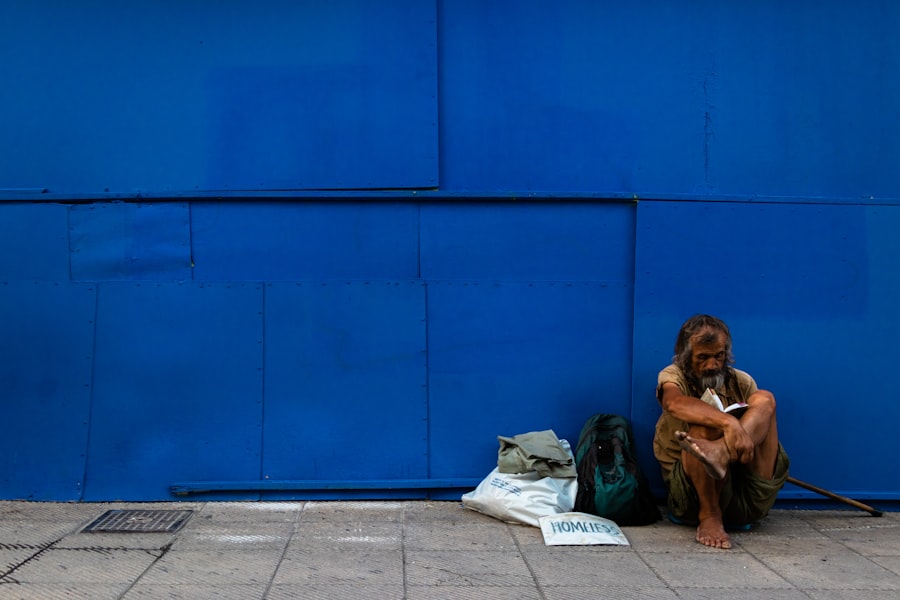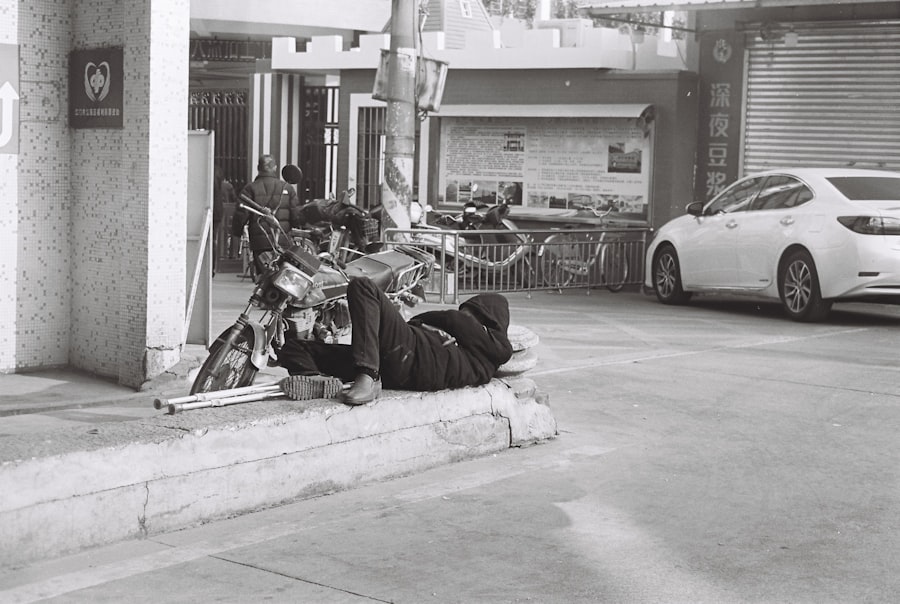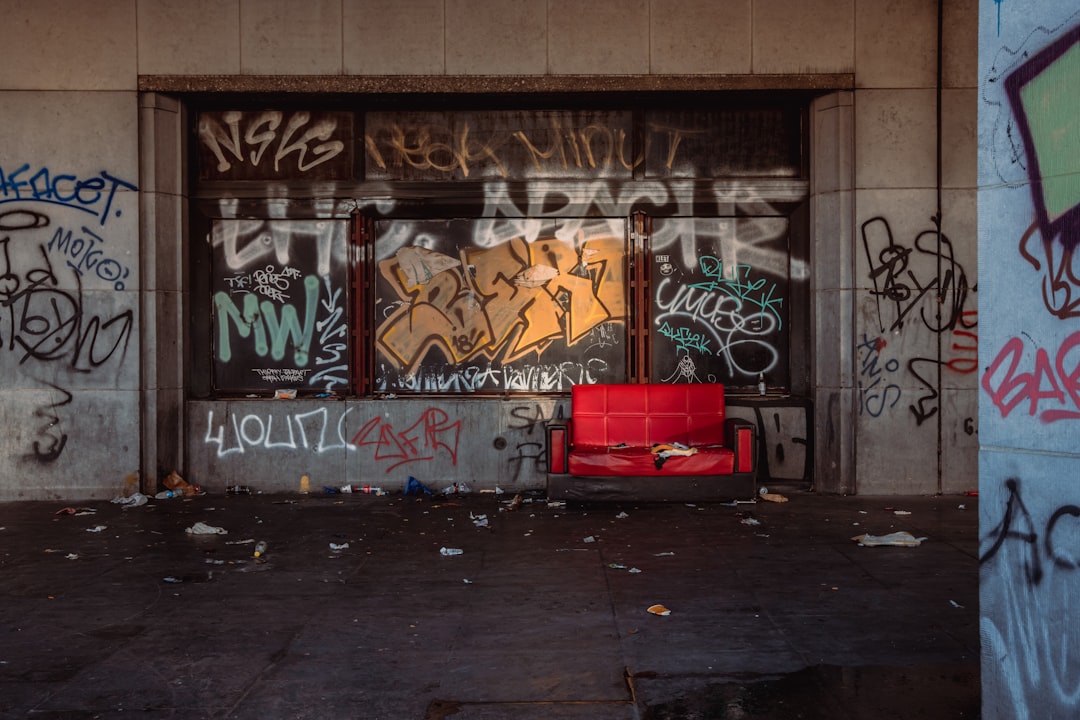New York City has long been synonymous with opportunity, culture, and vibrancy. However, the rising cost of living has become a significant concern for many of its residents. Over the past decade, the city has witnessed a dramatic increase in housing prices, making it increasingly difficult for individuals and families to find affordable accommodations.
The average rent for an apartment in Manhattan, for instance, has soared to levels that are often unattainable for the average worker. This surge in costs is not merely a reflection of market demand; it is also influenced by a myriad of factors including limited housing supply, increased demand from affluent newcomers, and the overall economic landscape. As the cost of living continues to escalate, many New Yorkers are forced to make difficult choices.
They may find themselves sacrificing quality of life for the sake of affordability, opting for smaller living spaces or neighborhoods that are less desirable. The financial strain is palpable, as residents grapple with the reality that their wages have not kept pace with the rising costs. This situation has led to a growing sense of frustration and anxiety among those who call the city home, as they navigate a landscape where the dream of living in New York City feels increasingly out of reach.
Key Takeaways
- The cost of living in New York City is on the rise, making it increasingly difficult for residents to afford rent.
- The COVID-19 pandemic has had a significant impact on NYC renters, leading to job loss and financial strain.
- Affordable housing in the city is a major struggle, with many residents unable to find suitable and affordable living options.
- Gentrification plays a role in NYC’s rent crisis, leading to the displacement of long-time residents as neighborhoods undergo rapid change.
- Long-time residents are being displaced due to rising rents, forcing many to leave their homes and communities.
- Government policies and initiatives are being implemented to address the rent crisis, but challenges remain in providing affordable housing for all.
- Low-income renters face significant challenges in finding and maintaining affordable housing in New York City.
- The financial burden of rent is a major concern for NYC residents, with many struggling to make ends meet due to high housing costs.
- The future of renting in New York City remains uncertain, with ongoing advocacy and activism for renters’ rights shaping the conversation.
- Strategies for coping with the NYC rent crisis include seeking assistance from housing organizations, negotiating with landlords, and exploring alternative living arrangements.
The Impact of the COVID-19 Pandemic on NYC Renters
The COVID-19 pandemic has had a profound impact on New York City’s rental market, exacerbating existing challenges while introducing new ones. As businesses shuttered and remote work became the norm, many residents found themselves facing job losses or reduced incomes. This sudden economic downturn led to an unprecedented wave of rent arrears, with countless tenants struggling to meet their monthly obligations.
The once-bustling streets of New York became eerily quiet, and the rental market experienced a significant shift as demand plummeted in certain areas while others remained resilient. In response to this crisis, various measures were implemented to protect renters from eviction and provide financial assistance. However, these initiatives were often temporary and did not address the underlying issues that had long plagued the city’s housing market.
As the pandemic waned and life began to return to some semblance of normalcy, many renters found themselves in precarious situations, facing the dual challenges of rising rents and stagnant wages. The pandemic served as a stark reminder of the vulnerabilities inherent in the rental market, highlighting the urgent need for sustainable solutions to support those most affected.
The City’s Struggle with Affordable Housing

New York City’s struggle with affordable housing is a multifaceted issue that has persisted for decades. Despite being one of the wealthiest cities in the world, a significant portion of its population lives below the poverty line, unable to secure stable housing. The lack of affordable options has led to a growing crisis, with many residents spending an unsustainable percentage of their income on rent.
The city’s housing policies have often been criticized for failing to keep pace with the needs of its diverse population, resulting in a widening gap between supply and demand. Efforts to create more affordable housing units have been met with various obstacles, including bureaucratic red tape, community opposition, and funding shortages. While initiatives such as inclusionary zoning and rent stabilization have been introduced to address these challenges, they have not been sufficient to meet the overwhelming demand.
As a result, many New Yorkers are left with few options, often forced to choose between substandard living conditions or relocating to areas far from their jobs and support networks.
The Role of Gentrification in NYC’s Rent Crisis
| Borough | Median Rent Increase | Percentage of Gentrified Neighborhoods |
|---|---|---|
| Manhattan | 2,500 | 70% |
| Brooklyn | 1,800 | 60% |
| Queens | 1,600 | 40% |
| Bronx | 1,400 | 30% |
| Staten Island | 1,300 | 20% |
Gentrification has played a significant role in shaping New York City’s rental landscape, contributing to both revitalization and displacement. As neighborhoods undergo transformation due to an influx of wealthier residents and new businesses, long-time residents often find themselves priced out of their homes. This phenomenon has been particularly pronounced in areas such as Brooklyn and Harlem, where once-affordable neighborhoods have seen dramatic increases in property values and rents.
While gentrification can bring investment and improvements to infrastructure, it also raises critical questions about equity and access. Many long-time residents feel marginalized as their communities change around them, leading to a loss of cultural identity and community ties. The tension between development and preservation is palpable, as advocates for affordable housing push back against policies that prioritize profit over people.
The complexities of gentrification highlight the need for thoughtful urban planning that considers the needs of all residents, rather than catering solely to those with greater financial means.
The Displacement of Long-time Residents
The displacement of long-time residents is one of the most heartbreaking consequences of New York City’s rent crisis. As neighborhoods gentrify and rents rise, many individuals who have lived in their homes for decades are forced to leave due to financial pressures. This displacement not only disrupts lives but also erodes the social fabric of communities that have been built over generations.
Families are often torn apart as they seek more affordable housing options elsewhere, leading to a loss of community support systems. The emotional toll of displacement cannot be overstated. Long-time residents often have deep connections to their neighborhoods, having invested time and energy into building relationships with neighbors and local businesses.
When they are forced to move, they lose not only their homes but also their sense of belonging. This phenomenon raises important questions about social justice and equity in urban development, as policymakers grapple with how to balance growth with the preservation of community integrity.
Government Policies and Initiatives to Address the Rent Crisis

In response to the ongoing rent crisis, various government policies and initiatives have been introduced aimed at alleviating some of the burdens faced by renters in New York City. Programs such as rent stabilization and affordable housing development incentives have been implemented to provide some relief for low- and middle-income families. Additionally, emergency measures during the COVID-19 pandemic sought to prevent mass evictions and provide financial assistance to those struggling to pay rent.
However, despite these efforts, many argue that existing policies are insufficient to address the scale of the crisis. Critics point out that rent stabilization often fails to cover all units or adequately protect tenants from steep increases. Furthermore, bureaucratic hurdles can hinder access to available resources for those who need them most.
As New York City continues to grapple with its housing challenges, there is an urgent need for comprehensive reform that prioritizes long-term solutions over temporary fixes.
The Challenges Faced by Low-income Renters
Low-income renters in New York City face a myriad of challenges that compound their struggles in an already difficult housing market. With limited financial resources, these individuals often find themselves at the mercy of landlords who may exploit their vulnerability by imposing exorbitant rents or neglecting necessary repairs. The lack of affordable housing options forces many low-income families into substandard living conditions that can adversely affect their health and well-being.
Language barriers, lack of access to information about tenant rights, and fear of retaliation from landlords can deter individuals from advocating for themselves. This systemic inequity perpetuates cycles of poverty and instability, making it increasingly difficult for low-income families to achieve economic mobility or secure stable housing.
The Financial Burden of Rent on NYC Residents
The financial burden of rent weighs heavily on many New Yorkers, impacting their overall quality of life and financial stability. With rents consuming a significant portion of household income—often exceeding 30%—residents are left with little room for other essential expenses such as food, healthcare, and education. This precarious situation forces many individuals into difficult choices that can have long-term consequences on their well-being.
As rent continues to rise without corresponding increases in wages or job opportunities, many residents find themselves trapped in a cycle of debt and financial insecurity. The stress associated with meeting monthly rent obligations can lead to mental health issues and strain relationships within families. For those living paycheck to paycheck, even minor financial setbacks can result in dire consequences such as eviction or homelessness.
The Future of Renting in New York City
The future of renting in New York City remains uncertain as various factors continue to shape the rental landscape. While there is hope that increased awareness around housing issues will lead to meaningful reforms, significant challenges persist. The ongoing demand for housing coupled with limited supply suggests that affordability will remain a pressing concern for years to come.
As new developments emerge and neighborhoods evolve, it is crucial for policymakers to prioritize inclusive practices that ensure all residents have access to safe and affordable housing. Moreover, as remote work becomes more prevalent post-pandemic, shifts in population dynamics may further complicate the rental market. Some areas may experience increased demand while others see declines as residents seek more affordable living options outside traditional urban centers.
Understanding these trends will be essential for anticipating future needs and crafting effective policies that address both current challenges and emerging realities.
The Advocacy and Activism for Renters’ Rights
In response to the ongoing rent crisis, advocacy and activism for renters’ rights have gained momentum across New York City. Grassroots organizations and coalitions have emerged to amplify the voices of tenants who are often marginalized in discussions about housing policy. These groups work tirelessly to raise awareness about issues such as eviction prevention, rent control measures, and tenant protections while mobilizing communities around shared goals.
Activists have also played a crucial role in pushing for legislative changes at both local and state levels. Their efforts have led to increased scrutiny of landlord practices and greater accountability within the rental market. By fostering solidarity among renters and encouraging collective action, these movements aim not only to address immediate concerns but also to create lasting change that prioritizes housing as a human right.
Strategies for Coping with the NYC Rent Crisis
As New Yorkers navigate the complexities of the rent crisis, various strategies can help individuals cope with rising costs and housing instability. Building community networks can provide essential support systems for those facing eviction or financial hardship. By connecting with neighbors and local organizations, residents can access resources such as legal assistance or financial counseling that may alleviate some burdens.
Additionally, exploring alternative housing arrangements—such as co-living spaces or shared apartments—can offer more affordable options for those struggling with high rents. Advocating for policy changes at local levels can also empower renters by fostering greater awareness around tenant rights and protections. Ultimately, while the challenges posed by New York City’s rent crisis are significant, collective action and community resilience can pave the way toward more equitable solutions for all residents.
The NYC rent crisis has been a growing concern for residents, with many struggling to keep up with the rising costs of living in the city. An insightful article that delves into the intricacies of this issue can be found on MyGeoQuest. This piece explores the various factors contributing to the rent crisis, including economic pressures and housing shortages, and offers potential solutions to alleviate the burden on tenants. For a deeper understanding of the situation, you can read the full article by visiting this link.
WATCH THIS! The Real Cost of NYC Living: Your Wallet, Sanity, and Subway Survival Skills
FAQs
What is the current rent crisis in NYC?
The current rent crisis in NYC refers to the increasing unaffordability of rental housing in the city, leading to a growing number of residents struggling to find and maintain affordable housing.
What are the main factors contributing to the rent crisis in NYC?
The main factors contributing to the rent crisis in NYC include a shortage of affordable housing, rising property values, gentrification, and stagnant wages.
How has the COVID-19 pandemic impacted the rent crisis in NYC?
The COVID-19 pandemic has exacerbated the rent crisis in NYC by causing job losses, income reductions, and financial instability for many residents, making it even more difficult to afford housing.
What are some potential solutions to the rent crisis in NYC?
Potential solutions to the rent crisis in NYC include increasing the supply of affordable housing, implementing rent control or stabilization measures, and providing financial assistance to low-income residents.
What are the consequences of the rent crisis in NYC?
The consequences of the rent crisis in NYC include displacement of long-term residents, increased homelessness, and a widening wealth gap between low-income and high-income residents.
